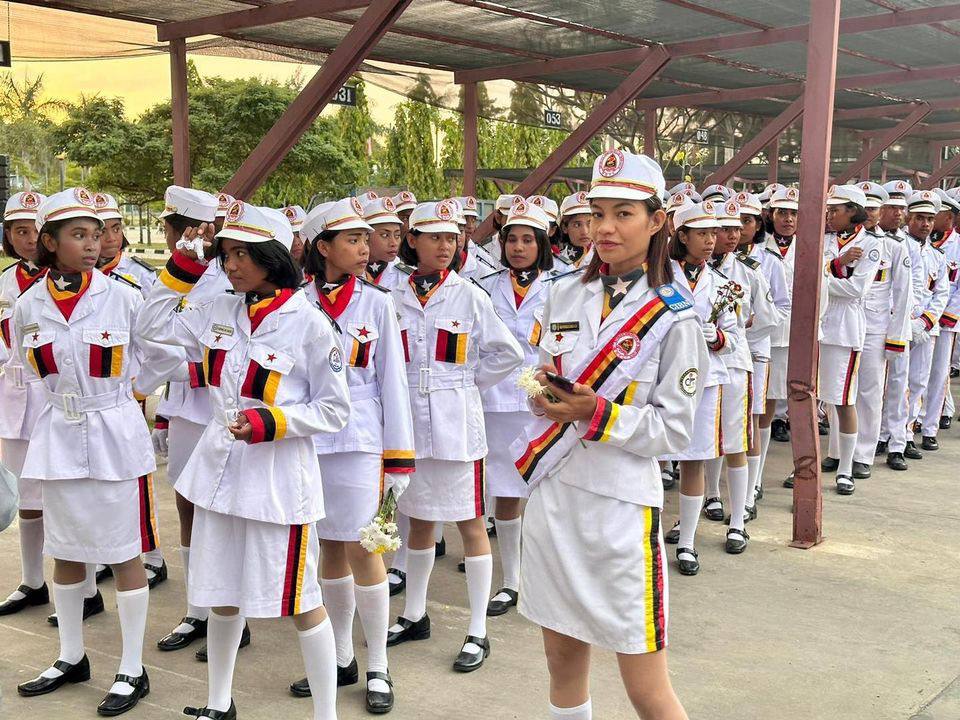The party of Timor-Leste’s independence hero Xanana Gusmao has won the most votes in the country’s parliamentary election, after final results were tallied during the first vote to be held in the country for almost 5 years.

His party, the National Congress for Timorese Reconstruction, known by its Portuguese acronym CNRT won 43 percent of the vote according to official results.
The previously governing Revolutionary Front for an Independent Timor-Leste (FRETILIN), the party of current Prime Minister José Maria Vasconcelos came second with about 26% of the votes, with the rest split among 15 smaller parties.
This marked a dramatic decline for FRETILIN, who some have blamed for causing much of the political deadlock that stunted the last parliament.
It marked the 5th parliamentary election since Timor-Leste, also known as East Timor gained independence after a bloody war with Indonesia in 2002. The oil rich country of 1.3 million people was recently granted provisional membership of ASEAN, whilst under the chair of Cambodia.
The country is now hoping to gain full membership of the regional block under the chairmanship of Indonesia, with whom the country now enjoys strong ties following a period of reconciliation between the two neighbors.
To read about the struggle to join ASEAN click here

The Timor-Leste political landscape
Most of the currently prominent post-independence politicians of the country are veterans of the struggle against Indonesian rule, with the latest election billed as a battle between two resistance heroes, namely Gusmao, who is now 76, and FRETILIN’s Mari Alkatiri, who is 73. This despite the fact Timor-Leste actually has the youngest population within the region.
Some though touted it more as a battle of ideologies with FRETILIN eronioulsy being accused by critics of being communist, while the CNRT has heavily tried to push itself as the party of business, despite both officially at least professing social-democracy.
Despite the win though the CNRT failed to gain a majority, so will have to seek out some of the other 15 parties represented parties in order to form a functioning coalition.
The parliamentary victory follows on from the CNRT’s win in last years presidential election which saw Nobel Peace Price laureate José Ramos-Horta become the nations head of state for the second time.
You can read my interview with President Horta here.

Another coalition government
Many have criticized the electoral system for creating a perpetual state of coalition governments, rather than the strong central leaderships enjoyed by other ASEAN nations.
The election which sees 17 parties represented in parliament follows on from the presidential election which saw 12 people stand for the top post. This being despite the fact there are only 1.3 million people in Timor-Leste.
As one politician, who asked not to be named put it “We have too much democracy right now. Some of the people who stood for president didn’t even have a job. What we need is strong leadership of then model that Cambodia has”.
Combos will head to the polls this month, with the Cambodian People’s Party all but ensured victory after the Candlelight Party were banned.
The election was also notable for the collapse of FRETLIN who led the country to independence, from where they were instrumental in converting the country into a multiparty democracy, rather than go down the route of Angola, or Mozambique.
The party not only suffered from its unpopular government, but also the split between its perception and its reality. The party has had to treaty a fine line from its detractors who accuse it of being too left-wing and a grassroots membership who feel that have not been left-wing enough.
Timor-Leste, also known as East Timor has a limited welfare state, despite boasting a huge sovereign wealth fund, a fund many want to see spent on improving the lives of the people.

